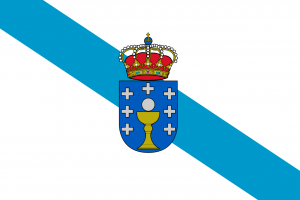Difference between revisions of "Language/Galician/Vocabulary/Numbers-1-10"
m (Quick edit) |
m (Quick edit) |
||
| Line 82: | Line 82: | ||
===The Sound of the Galician language (AGAL Norm) (Numbers ...=== | ===The Sound of the Galician language (AGAL Norm) (Numbers ...=== | ||
<youtube>https://www.youtube.com/watch?v=2aHsciFL7-c</youtube> | <youtube>https://www.youtube.com/watch?v=2aHsciFL7-c</youtube> | ||
==Other Lessons== | |||
* [[Language/Galician/Vocabulary/Geography|Geography]] | |||
* [[Language/Galician/Vocabulary/Greetings|Greetings]] | |||
* [[Language/Galician/Vocabulary/Airport|Airport]] | |||
* [[Language/Galician/Vocabulary/Basic-Phrases-in-Galician|Basic Phrases in Galician]] | |||
* [[Language/Galician/Vocabulary/Parts-of-the-Body|Parts of the Body]] | |||
* [[Language/Galician/Vocabulary/Months-of-the-Year|Months of the Year]] | |||
* [[Language/Galician/Vocabulary/Time|Time]] | |||
* [[Language/Galician/Vocabulary/Days-of-the-Week|Days of the Week]] | |||
* [[Language/Galician/Vocabulary/Modes-of-Transportation|Modes of Transportation]] | |||
* [[Language/Galician/Vocabulary/Travel-Vocabulary|Travel Vocabulary]] | |||
{{Galician-Page-Bottom}} | {{Galician-Page-Bottom}} | ||
Revision as of 21:31, 2 April 2023
Galician is a language spoken in Galicia, Spain. It is a Romance language, which means it has parented from Latin. With this lesson, you will learn how to count from 1 to 10 in Galician.
Numbers 1-10
Galician numbers have two forms: a full form and a short form. The full form is used when counting or in conjunction with other numbers, while the short form is used in dates and telephone numbers.
Here are the numbers from 1 to 10 in Galician:
| Galician | Pronunciation | English |
|---|---|---|
| un | [un] | one |
| dous | [dowθ] | two |
| tres | [trɛs] | three |
| catro | [ka.tro] | four |
| cinco | [θiŋ.ko] | five |
| seis | [sejʃ] | six |
| sete | [sɛ.tɛ] | seven |
| oito | [o.θo] | eight |
| nove | [no.vɛ] | nine |
| dez | [dɛθ] | ten |
Notice that some letters in Galician may not be pronounced the same as they would be in English. For example, the letter "s" at the end of a word is pronounced as "sh," and "j" is pronounced as "h" in English.
Here are some examples of how to use these numbers in sentences:
- Un nené. (One baby.)
- Dous páxaros. (Two birds.)
- Tres gatos. (Three cats.)
- Catro árbores. (Four trees.)
- Cinco bolos. (Five balls.)
- Seis flores. (Six flowers.)
- Sete libros. (Seven books.)
- Oito pombas. (Eight doves.)
- Nove animais. (Nine animals.)
- Dez estudantes. (Ten students.)
It is important to note that, in Galician, nouns and adjectives must agree in gender and number with the noun they describe. For example, the word for "tree" is "árbore," which is a feminine noun. Therefore, the adjective that describes it must also be in the feminine form.
With this lesson, you have learned how to count from 1 to 10 in Galician. Practice these numbers frequently to become more familiar with Galician pronunciation and grammar. In the next lesson, you will learn the names of common colors.
Videos
The Sound of the Galician-Portuguese Language (Numbers ...
The Sound of the Galician language (AGAL Norm) (Numbers ...
Other Lessons
- Geography
- Greetings
- Airport
- Basic Phrases in Galician
- Parts of the Body
- Months of the Year
- Time
- Days of the Week
- Modes of Transportation
- Travel Vocabulary
